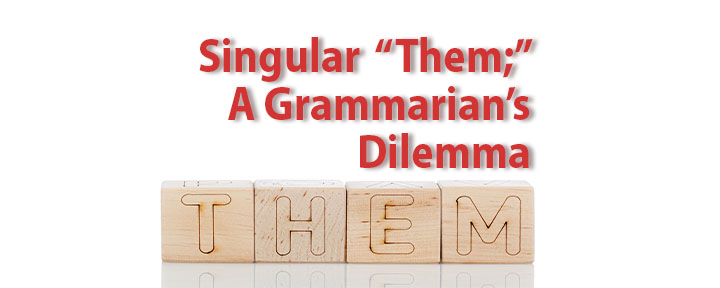
As a lifelong educator and a stickler for grammar, I’ve always valued precise language. I believe clarity matters—especially when teaching, writing, or communicating across generations. So, I’ll admit that the use of they/them as a singular pronoun for non-binary individuals has left me a little… grammatically disoriented.
Let me be clear: I fully support people’s right to define who they are and to ask others to respect that identity. For young people—especially those exploring gender beyond the traditional binary—having the power to say “these are my pronouns” is empowering and important. I respect that. I support that. And I believe our schools, workplaces, and communities should too.
But here’s the dilemma: they and them have always been plural pronouns in standard English. When someone says, “They’ll be joining you at 3 p.m.,” my mind naturally imagines more than one person walking through the door. That’s what I was taught. That’s what I’ve taught others. And that’s what causes confusion—not out of disrespect, but out of habit and grammatical instinct.
In recent years, I’ve had to catch myself—more than once—after misunderstanding whether one person or a group was being referenced. And I’ve heard the same concern from other educators, parents, and colleagues. The confusion isn’t about rejection of identity; it’s about language systems catching up to social change.
My 40-year-old daughter recently cautioned me that voicing this opinion publicly could upset people who’ve fought hard for recognition and inclusion. I understand that. This article isn’t meant to dismiss or criticize anyone’s chosen pronouns. Rather, I hope it opens the door to a respectful conversation about how we use language to support identity and maintain clarity.
Because isn’t that what communication is about? Making sure that our message is both respectful and understood?
The truth is, English is constantly evolving. We’ve adapted before. You used to be strictly plural. Now we use it for individuals all the time. And the singular they actually has historical roots in the writings of Shakespeare and Jane Austen. Still, today’s usage of they/them as a personal pronoun is new for many people, and it comes with some practical challenges.
That’s why I wonder: might there be a future where we create—or adopt—a new gender-neutral singular pronoun? One that clearly refers to one person and avoids the grammatical confusion that “they” can cause?
Interestingly, some individuals already use gender-neutral pronouns like ze/hir/hirs. Pronounced zee, heer, and heers, these pronouns work similarly to he/him/his or she/her/hers. For example:
• “Ze is a teacher.”
• “I spoke to hir yesterday.”
• “That book is hirs.”
These alternative pronouns have not yet gained mainstream usage, but they offer a possible path forward—language that is both inclusive and less ambiguous in terms of number. Perhaps, with time and broader awareness, they could help bridge the gap between clarity and respect.
Of course, any shift like this takes time. Language doesn’t change overnight—especially when it’s tied to something as personal and sensitive as identity. And any new pronouns must be chosen, embraced, and led by the communities who use them.
In the meantime, I believe there’s a shared responsibility. For those of us who grew up in a more rigid grammatical world, it’s important to learn, adapt, and make space for gender diversity. Using someone’s correct pronouns is a small act of kindness that can give comfort. For those who use they/them, offering context or clarifying language when helpful (“My friend uses they/them pronouns and will join us later”) can reduce misunderstanding without compromising identity.
This isn’t an either/or issue—it’s a both/and. We can respect identity and advocate for clear communication. We can support the use of they/them now, and still have a thoughtful conversation about how inclusive language can evolve in ways that serve everyone.
Ultimately, language is a bridge. Let’s build it together—with compassion, with clarity, and with the humility to keep learning.
